2019-12-26 - Nº 243
Editorial
Esta é a Newsletter Nº 243 que se apresenta com o mesmo formato que as anteriores. Se gostar da Newsletter partilhe-a!
Todas as Newsletters encontram-se indexadas no link.
Esta Newsletter tem os seguintes tópicos:
Faz hoje anos que nascia, em 1791, Charles Babbage. Este matemático inglês foi pioneiro da computação mecânica, para tentar eliminar imprecisões nas tabelas matemáticas. Em 1822, ele tinha uma pequena máquina de calcular capaz de calcular quadrados. Ele produziu protótipos de partes de um mecanismo de diferença maior. (Georg e Edvard Schuetz posteriormente construíram os primeiros dispositivos de trabalho com o mesmo desenho, que foram bem-sucedidos em aplicações limitadas.) Em 1833, ele iniciou a sua máquina analítica programável, precursora dos computadores modernos. As suas outras invenções incluem o cowcatcher (uma armação de metal na frente de uma locomotiva para afastar o gado ou outros obstáculos na linha), dinamómetro, medidor padrão de ferrovia, tarifas postais uniformes, luzes ocultas para faróis, sinais de hora de Greenwich, oftalmoscópio heliográfico. Ele também tinha interesse em cifras e fechaduras.
Faz também anos hoje que nascia, em 1838, Clemens Winkler. Este químico alemão descobriu o elemento químico germânio (1886). No início da sua carreira, ele desenvolveu novas técnicas para análise de gás industrial e desenvolveu a bureta de gás Winkler. Quando, na Academia de Mineração Freiberg, a Escola Freiberg de Mineração analisou o mineral argirodita (um minério de sulfeto de prata), ele descobriu que todos os elementos conhecidos continham apenas 93% do seu peso. Depois de passar quatro meses a investigar e isolar os 7% restantes, ele encontrou o novo elemento a que chamou germânio, em nome da Alemanha. Este foi o terceiro dos elementos (eka-silício) previsto por Dmitry I. Mendeleyev em 1871.
Por fim, faz anos hoje que nascia, em 1928, Martin Cooper. Este engenheiro americano é pioneiro no sector de comunicações sem fio, especialmente na gestão de espectro de rádio, com onze patentes nessa área. Enquanto estava na Motorola na década de 1970, Cooper inventou o primeiro telemóvel (diferente do telefone do carro) em 1973 e liderou a equipa que o desenvolveu e o colocou no mercado em 1983. Ele é considerado o "pai do telemóvel" e também é citado como a primeira pessoa na história a fazer um telefonema através de um telemóvel em público.
E nesta semana que passou ficámos a saber que a ultima missão espacial do ano vai ser lançada no dia 27 de Dezembro. Lançada pela Russia, no foguetão Rockot, transportará o 15º grupo de três satélites de comunicações de baixa órbita Gonets-M. Também se espera que o mesmo lançamento entregue um par de esferas de vidro polido, chamadas Blits-M que são usadas como reflectores a laser em estudos gravitacionais de alta precisão.
Na Newsletter desta semana apresentamos diversos projetos de maker.
Esta é a última newsletter de 2019, nesse sentido resta-me desejar a todos os excelente 2020 cheio de projectos e de alegrias!
 João Alves ([email protected])
João Alves ([email protected])
O conteúdo da Newsletter encontra-se sob a licença  Creative Commons Attribution-NonCommercial-ShareAlike 4.0 International License.
Creative Commons Attribution-NonCommercial-ShareAlike 4.0 International License.
Novidades da Semana
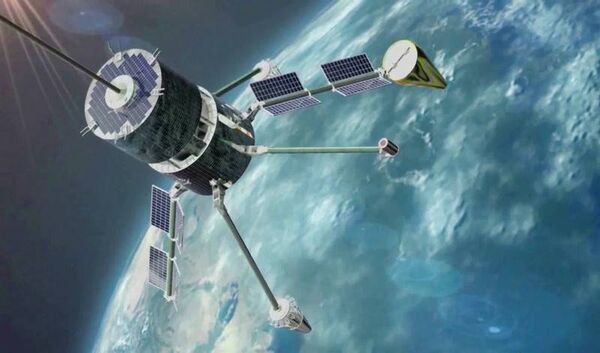
Last Rockot launches a satellite cluster
"Passengers aboard the last Rockot mission The primary payload of the Rockot mission is the 15th group of three Gonets-M low-orbital communications satellites. They received official production numbers No. 24, 25 and 26. The same launch was also expected to deliver a pair of polished glass spheres called Blits-M which are used as laser reflectors in high-accuracy gravitational studies, even though only one actually made it onboard the rocket. The Blits series was developed at SPP, a Roskosmos enterprise specialized in guidance and tracking systems for the military and space industry. In addition, the Radio-2017 experimental satellite was originally planned to piggy-back on the same rocket, but was not ultimately included into the payload." [...]
Outras Notícias
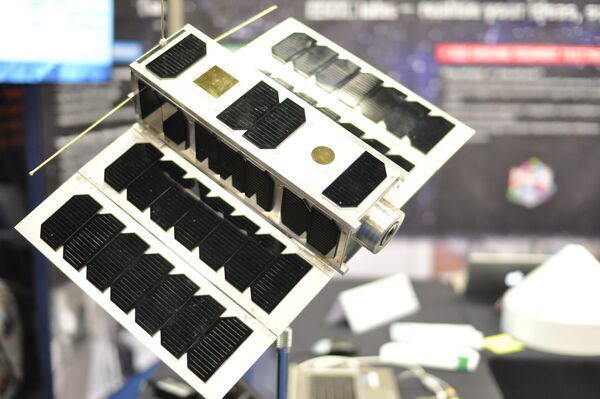
OPS-SAT: your flying laboratory
"Only 30 cm high, OPS-SAT packs a punch. Carrying an experimental computer ten times more powerful than on any current ESA spacecraft, OPS-SAT is yours to do what you want with. With this powerful on-board computer, a high-resolution camera to take detailed pictures of Earth, radio equipment and other specialised tools, OPS-SAT makes it possible for you to perform a variety of exciting experiments in space. OPS-SAT's mission? To take down the barriers to spacecraft operations. We want to bring you into the heart of Europe’s control centre, to share your ideas and ultimately test them out in orbit." [...]

Samsung’s ISOCELL Bright HMX Brings the High Performance of Professional Cameras to the Smartphone
"The advances made in recent years to mobile technology have resulted in some amazing user benefits – from enhanced productivity features to intelligent performance. But one feature that users consistently value highly is camera sophistication. Samsung Electronics is not only aware of this, but also works tirelessly to ensure that their camera technology remains cutting-edge. Accordingly, Samsung has released its 108-megapixel (Mp) ISOCELL Bright HMX, the industry’s first mobile image sensor to exceed 100 million pixels. Boasting a resolution similar to that of a medium format expert-grade camera, this new image sensor not only enables the user to capture extremely sharp photos, but also allows them to do so in a wide range of adverse lighting conditions. Check out the video below to see the ISOCELL Bright HMX’s features and user benefits in-depth." [...]

MediaPipe
"MediaPipe is a cross-platform framework for building multimodal applied machine learning pipelines. MediaPipe is a framework for building multimodal (eg. video, audio, any time series data) applied ML pipelines. With MediaPipe, a perception pipeline can be built as a graph of modular components, including, for instance, inference models (e.g., TensorFlow, TFLite) and media processing functions. " [...]

Baidu’s Pre-training Model ERNIE Achieves New NLP Benchmark Record
"With natural language processing widely being adopted across a growing number of use cases from search engines to mobile smart assistants, leading pre-training language models like Baidu’s ERNIE (Enhanced Representation through kNowledge IntEgration) are receiving strong attention within the machine learning community due to their advancements. After substantial progress since its release earlier this year, today we are excited to announce that ERNIE has achieved new state-of-the-art performance on GLUE and become the world’s first model to score over 90 in terms of the macro-average score (90.1). GLUE (General Language Understanding Evaluation) is a widely-recognized multi-task benchmark and analysis platform for natural language understanding (NLU). It comprises multiple NLU tasks including question answering, sentiment analysis, textual entailment, and an associated online platform for model evaluation, comparison, and analysis. ERNIE is a continual pre-training framework that builds and learns incrementally by pre-training tasks through sequential multi-task learning. We introduced ERNIE 1.0 early this year and released the improved ERNIE 2.0 model in July." [...]
Ciência e Tecnologia

When machine learning packs an economic punch
"Study: After eBay improved its translation software, international commerce increased sharply. A new study co-authored by an MIT economist shows that improved translation software can significantly boost international trade online — a notable case of machine learning having a clear impact on economic activity. The research finds that after eBay improved its automatic translation program in 2014, commerce shot up by 10.9 percent among pairs of countries where people could use the new system. “That’s a striking number. To have it be so clear in such a short amount of time really says a lot about the power of this technology,” says Erik Brynjolfsson, an MIT economist and co-author of a new paper detailing the results. To put the results in perspective, he adds, consider that physical distance is, by itself, also a significant barrier to global commerce." [...]
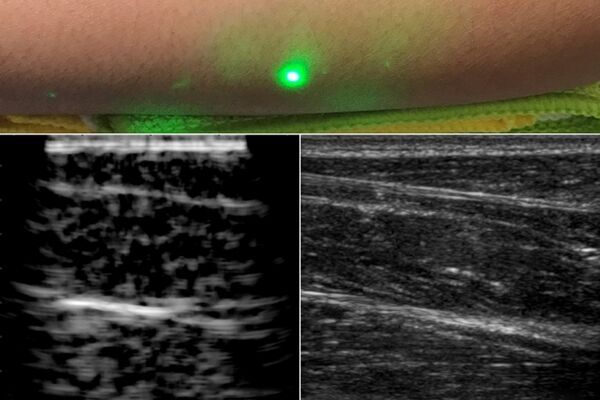
Researchers produce first laser ultrasound images of humans
"Technique may help remotely image and assess health of infants, burn victims, and accident survivors in hard-to-reach places. For most people, getting an ultrasound is a relatively easy procedure: As a technician gently presses a probe against a patient’s skin, sound waves generated by the probe travel through the skin, bouncing off muscle, fat, and other soft tissues before reflecting back to the probe, which detects and translates the waves into an image of what lies beneath. Conventional ultrasound doesn’t expose patients to harmful radiation as X-ray and CT scanners do, and it’s generally noninvasive. But it does require contact with a patient’s body, and as such, may be limiting in situations where clinicians might want to image patients who don’t tolerate the probe well, such as babies, burn victims, or other patients with sensitive skin. Furthermore, ultrasound probe contact induces significant image variability, which is a major challenge in modern ultrasound imaging. Now, MIT engineers have come up with an alternative to conventional ultrasound that doesn’t require contact with the body to see inside a patient." [...]

A new network design for the “Internet from space”
"A new generation of low-flying satellites promises an “Internet from space”, that will be able to cover even remote regions around the world. Computer scientists at ETH Zurich are proposing a novel network design that could double the network capacity of such systems. Satellites do not yet play a major role in the world’s Internet infrastructure. However, this may soon be set to change. Within the next decade, a new generation of satellites could lay the foundations for an “Internet from space”, believes Ankit Singla, professor at ETH Zurich’s Network Design & Architecture Lab. His team is investigating how to improve the performance of large-scale computer networks, including the Internet." [...]

Capturing CO2 from trucks and reducing their emissions by 90%
"Researchers at EPFL have patented a new concept that could cut trucks’ CO2 emissions by almost 90%. It involves capturing CO2 within the exhaust system, converting it into a liquid and storing it on the vehicle. The liquid CO2 would then be delivered to a service station and where it will be turned back into fuel using renewable energy. In Europe, transport is responsible for nearly 30% of the total CO2 emissions, of which 72% comes from road transportation*. While the use of electric vehicles for personal transportation could help lower that number, reducing emissions from commercial transport – such as trucks or buses – is a much greater challenge. Researchers at EPFL have now come up with a novel solution: capturing CO2 directly in the trucks’ exhaust system and liquefying it in a box on the vehicle’s roof." [...]

A sign that aliens could stink
"A molecule that’s known for its smelly and poisonous nature on Earth may be a sure-fire sign of extraterrestrial life. Phosphine is among the stinkiest, most toxic gases on Earth, found in some of the foulest of places, including penguin dung heaps, the depths of swamps and bogs, and even in the bowels of some badgers and fish. This putrid “swamp gas” is also highly flammable and reactive with particles in our atmosphere. Most life on Earth, specifically all aerobic, oxygen-breathing life, wants nothing to do with phosphine, neither producing it nor relying on it for survival. Now MIT researchers have found that phosphine is produced by another, less abundant life form: anaerobic organisms, such as bacteria and microbes, that don’t require oxygen to thrive. The team found that phosphine cannot be produced in any other way except by these extreme, oxygen-averse organisms, making phosphine a pure biosignature — a sign of life (at least of a certain kind)." [...]
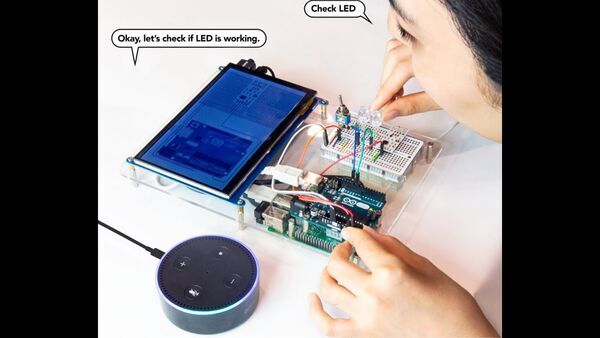
HeyTeddy: Conversational Test-Driven Development for Physical Computing
"Physical computing is a complex activity that consists of different but tightly coupled tasks: programming and assembling hardware for circuits. Prior work clearly shows that this coupling is the main source of mistakes that unfruitfully take a large portion of novices’ debugging time. While past work presented systems that simplify prototyping or introduce novel debugging functionalities, these tools either limit what users can accomplish or are too complex for beginners. In this paper, we propose a general-purpose prototyping tool based on conversation. HeyTeddy guides users during hardware assembly by providing additional information on requests or by interactively presenting the assembly steps to build a circuit. Furthermore, the user can program and execute code in real-time on their Arduino platform without having to write any code, but instead by using commands triggered by voice or text via chat." [...]
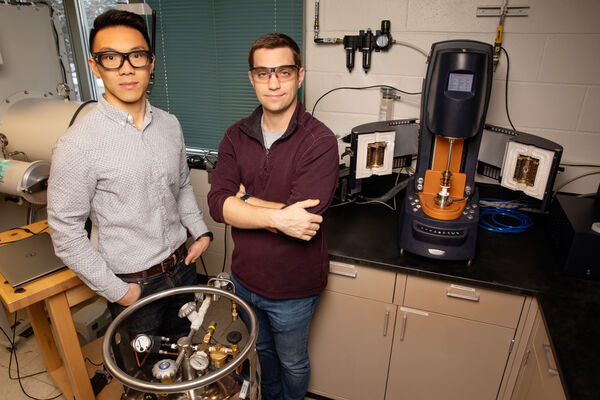
New polymer material may help batteries become self-healing, recyclable
"Lithium-ion batteries are notorious for developing internal electrical shorts that can ignite a battery’s liquid electrolytes, leading to explosions and fires. Engineers at the University of Illinois have developed a solid polymer-based electrolyte that can self-heal after damage – and the material can also be recycled without the use of harsh chemicals or high temperatures. The new study, which could help manufacturers produce recyclable, self-healing commercial batteries, is published in the Journal of the American Chemical Society. As lithium-ion batteries go through multiple cycles of charge and discharge, they develop tiny, branchlike structures of solid lithium called dendrites, the researchers said. These structures reduce battery life, cause hotspots and electrical shorts, and sometimes grow large enough to puncture the internal parts of the battery, causing explosive chemical reactions between the electrodes and electrolyte liquids. There has been a push by chemists and engineers to replace the liquid electrolytes in lithium-ion batteries with solid materials such as ceramics or polymers, the researchers said." [...]
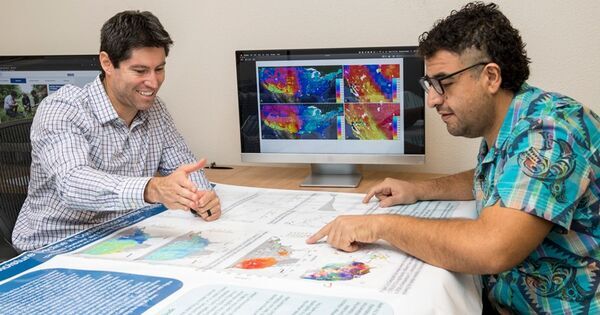
Mapping soil moisture in high definition
"New model from UD’s Guevara, Vargas helps to fill data gaps Soil moisture is easy to see when your favorite Little Leaguer slides into second base the day after a big summer storm. The mud splattered on that little hustler’s uniform tells the story. Trying to gauge soil moisture across large areas — regions, nations, continents — is a whole ‘nother challenge, and a critical one. Knowledge of this dimension of our ecosystem is extremely important for farmers, planners, scientists, insurance companies and anyone concerned about preparing for global environmental change. “Understanding these patterns is critical to national and international security,” said Rodrigo Vargas, associate professor of ecosystem ecology and environmental change in the Department of Plant and Soil Sciences at the University of Delaware. “We cannot measure everything everywhere all the time…." [...]
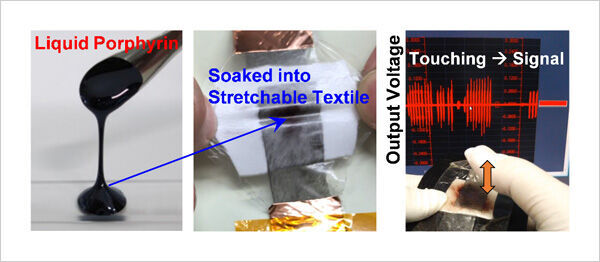
Development of a Stretchable Vibration-Powered Device Using a Liquid Electret
"NIMS and AIST developed a liquid electret material capable of semi-permanently retaining static electricity. They subsequently combined this material with soft electrodes to create the first bendable, stretchable vibration-powered device in the world. Because this device is highly deformable and capable of converting very subtle vibrations into electrical signals, it may be applicable to the development of healthcare-devices, such as self-powered heartbeat and pulse sensors. (”Soft chromophore featured liquid porphyrins and their utilization toward liquid electret applications” Avijit Ghosh, Manabu Yoshida, Kouji Suemori, Hiroaki Isago, Nagao Kobayashi, Yasuhisa Mizutani, Yuki Kurashige, Izuru Kawamura, Masami Nirei, Osamu Yamamuro, Tomohisa Takaya, Koichi Iwata, Akinori Saeki, Kazuhiko Nagura, Shinsuke Ishihara & Takashi Nakanishi; Journal: Nature Communications [September 30, 2019]; DOI:10.1038/s41467-019-12249-8(*Open in new window)) NIMS and AIST developed a liquid electret material capable of semi-permanently retaining static electricity. They subsequently combined this material with soft electrodes to create the first bendable, stretchable vibration-powered device in the world. Because this device is highly deformable and capable of converting very subtle vibrations into electrical signals, it may be applicable to the development of healthcare-devices, such as self-powered heartbeat and pulse sensors." [...]

Researchers optimize additive manufacturing on a molecular level
"Engineering professors create computational framework to understand 3D printing on a nanoscale As the complexity and applications of additive manufacturing increase, Penn State researchers are digging down to the smallest scales to optimize the technology on a molecular level. “There are still a lot of unknowns about how 3D printing actually works,” said Adri van Duin, principal investigator of the project and professor of mechanical engineering, chemical engineering, and engineering science and mechanics at Penn State. “For this project, we theorized you could learn a lot by looking at the various molecules they’re operating with.” A paper published in the Physical Chemistry Chemical Physics Journal details how researchers examined additive manufacturing methods and materials using atomistic-scale simulations to optimize their performance for ultimately stronger and more useful 3D-printed components. “We went down to the most fundamental level, looking at the physical chemistry and the strengths of these molecular interactions,” van Duin said. Specifically, his team scrutinized the reactions occurring within a binder jetting solution used for 3D printing, which essentially acts as the glue that bonds the printed layers of primary materials together. “You want the glue to organize itself in the space between the nanoparticles,” van Duin said." [...]

New security system to revolutionise privacy
"A new uncrackable security system created by researchers at the University of St Andrews, King Abdullah University of Science and Technology (KAUST) and the Center for Unconventional Processes of Sciences (CUP Sciences) is set to revolutionise communications privacy. The international team of scientists have created optical chips that enable information to be sent from user to user using a one-time unhackable communication that achieves ‘perfect secrecy’, allowing confidential data to be protected more securely than ever before on public classical communication channels. The proposed system uses silicon chips that contain complex structures that are irreversibly changed to send information in a one-time key that can never be recreated nor intercepted by an attacker. The technology overcomes the major threat of quantum computers, which are soon predicted to be able to crack existing communication methods, uses existing communication networks and takes up less space on networks. The results, published in the scientific journal Nature Communications, open a new pathway towards implementing ‘perfect secrecy’ cryptography at the global scale with contained costs. First author, Professor Andrea di Falco of the School of Physics and Astronomy at the University of St Andrews, said: “This new technique is absolutely unbreakable, as we rigorously demonstrated in our article." [...]
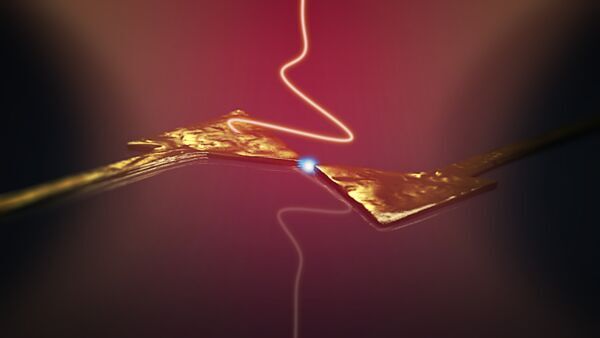
Electronics at the speed of light
"A European team of researchers including physicists from the University of Konstanz has found a way of transporting electrons at times below the femtosecond range by manipulating them with light. This could have major implications for the future of data processing and computing. Contemporary electronic components, which are traditionally based on silicon semiconductor technology, can be switched on or off within picoseconds (i.e. 10-12 seconds). Standard mobile phones and computers work at maximum frequencies of several gigahertz (1 GHz = 109 Hz) while individual transistors can approach one terahertz (1 THz = 1012 Hz). Further increasing the speed at which electronic switching devices can be opened or closed using the standard technology has since proven a challenge." [...]
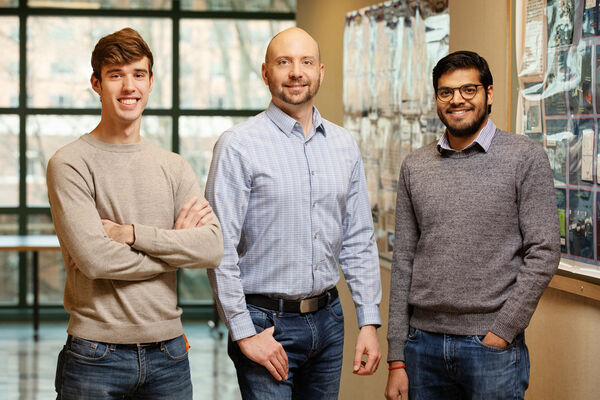
Scientists develop gentle, microscopic hands to study tiny, soft materials
"Handling very soft, delicate items without damaging them is hard enough with human hands, let alone doing it at the microscopic scale with laboratory instruments. Three new studies show how scientists have honed a technique for handling tiny, soft particles using precisely controlled fluid flows that act as gentle microscopic hands. The technique allows researchers to test the physical limits of these soft particles and the things made from them – ranging from biological tissues to fabric softeners. The three studies, led by the University of Illinois’ Charles Schroeder, the Ray and Beverly Mentzer Faculty Scholar of chemical and biomolecular engineering, detail the technology and application of the Stokes trap – a method for manipulating small particles using only fluid flow. In the newest study, published in the journal Soft Matter, the team used the Stokes trap to study the dynamics of vesicles – squishy fluid-filled particles that are stripped-down versions of cells and have direct relevance to biological systems, the researchers said. This follows up on two recent studies in the journals Physical Review Fluids and Physical Review Applied that expanded the power of the trapping method." [...]
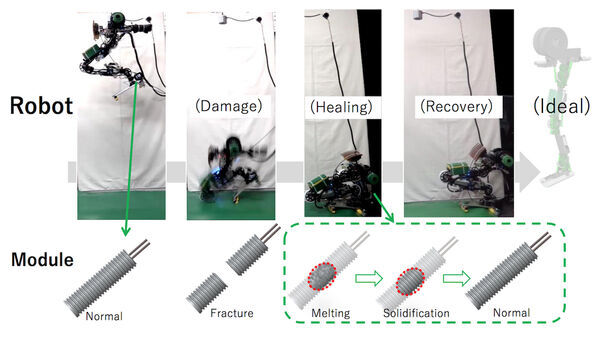
Robot With Liquid Metal Tendons Can Heal Itself
"The more dynamic robots get, the more likely they are to break. Or rather, all robots are 100 percent guaranteed to break eventually (this is one of their defining characteristics). More dynamic robots will also break more violently. While they’re in the lab, this isn’t a big deal, but for long term real-world use, wouldn’t it be great if we could rely on robots to repair themselves? Rather than give a robot a screwdriver and expect it to replace its own parts, though, a much more elegant solution is robots that can heal themselves more like animals, where for many common injuries, all you have to do is sit around for a little while and your body will magically fix itself. We’ve seen a few examples of this before using self-healing polymers, but for dynamic robots that run and jump, you need the strength of metal." [...]
Silicon Quantum Bits Communicate over Relatively Long Distance
"A Princeton University research team has shown that silicon quantum bits (qubits), mediated by a microwave photon, can interact even when spaced relatively far apart on a computer chip. The ability to transmit messages across relatively long distances on a silicon chip using multiple qubits could open new possibilities for quantum computing. The Princeton team, led by professor Jason Petta, connected the qubits via a narrow cavity that carried light in a way similar to the fiber optic cables that deliver internet signals to homes and businesses. The cavity contained a single photon, which could receive a message from one qubit and transmit it to the next qubit. The two qubits were located about one-half centimeter apart. (To put that distance in perspective, if each qubit were the size of a house, one qubit would be able to send a message to another qubit located 750 miles away.)" [...]
Projetos Maker
Diversos Projetos interessantes.
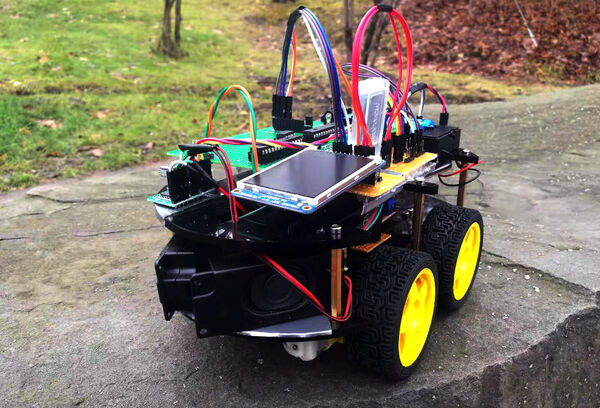
Web Controlled Multifunctional Car
"In our final project, we have built a multi-functional car controlled by a web application on the PC, which allows users to drive the car as well as play music from the interface on the website. All the requests from the website are collected by JavaScript and the runtime environment Node.js serves to transmit the command via Bluetooth to the car, which enables the car to perform different functions based on the commands: Driving Mode: Move toward one specific direction Speaker Mode: Read .WAV files stored in the SD card and play it through speakers, as well as showcase the amplitude of the audio on the TFT display Piano Mode: Play certain notes of one piano and display which key being pressed on the TFT In general, we applied what we have learned in this course into this project and integrating many functions together was quite fun and a good learning experience. Rationale Node.js is an open source server environment and it runs single-threaded, non-blocking, and asynchronously, which is very memory efficient. In addition, Node.js has a built-in HTTP module that allows Node.js to transfer data over the Hyper Text Transfer Protocol(HTTP) and it can create an HTTP server that listens to server ports. The SerialPort object of Node.js is also quite useful to open a port and it allows reading or writing to the serial port at any time. So it is feasible to use the SerialPort object as the bridge between JavaScript and the microcontroller." [...]

Managing Beverages With the Keg Master
"With the Keg Master I can track quantities, set, monitor, and maintain CO2 pressure, as well as control the flow of beverages from kegs. Using the AzureSphere, I have created the KegMaster to secure the homebrew beer in my Keg Freezer (Keezer). The system allows me to track quantities, to set, monitor, and maintain CO2 pressure in multiple kegs, convey information about the available beverages to users via the KegMaster app, as well as control and measure flow of beverages from each keg. Story/Background: When tasked with a project that suggested that I “Secure Everything” I had to consider what was most important to me. I considered many different aspects of my life that might benefit from some additional security. Ultimately, I decided that as a homebrewer, I needed a way to best secure and manage my beer supply." [...]
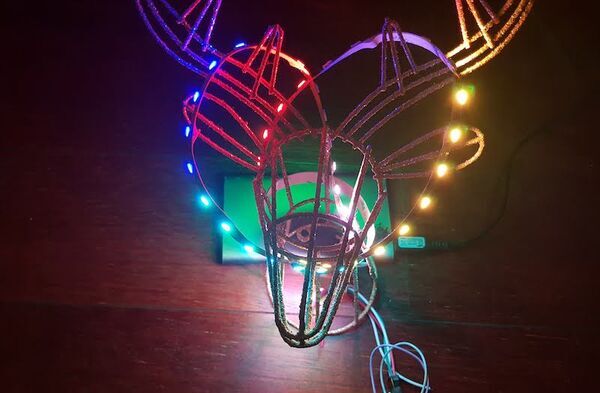
Sound lights with Spotify and ESP8266
"As unfortunately my old fancy sound lights setup only works on Linux, it stopped working after I switched to a new laptop. So I decided to make a cross-platform solution. Lights colors from audio Apparently, it’s not so easy to capture and analyze audio stream from a random music app on macOS, so I chose a bit of vendor locked solution with a precalculated track analysis from Spotify API. " [...]

Motor speed regulation without encoder
"For controlling DC motor speed, often the PWM method is used. Using this method you can accelerate or decelerate the motor speed, but without any feedback, the speed of the motor strongly depends on the conditions, like the motor load, or the voltage source. If you want to know the exact speed of the motor, you can use a feedback device (e.g. an encoder). With information from the feedback device, you can adjust the duty cycle of the PWM signal to keep the motor at the desired speed. In this article I would like to show how the DC motor speed can be measured without using any external feedback device." [...]

Particles Detector for Air Quality
"In this project I show how to build a particles detector with data display, data backup on SD card and IoT with Android application. In this project I show how to build a particle detector with data display, data backup on SD card and IoT. Visually a NeoPixel ring display indicates the air quality. Air quality is an increasingly important concern today. there are systems to measure the dust rate but they are very expensive. There are low-cost, high-quality particle detectors on the market, as shown by some studies." [...]
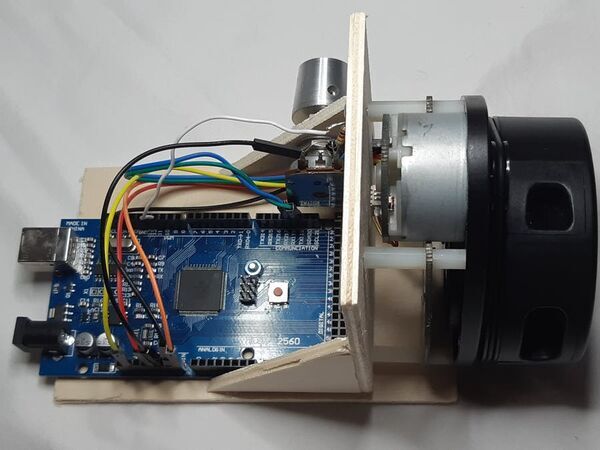
Build a Laser Harp with a LIDAR and Arduino
"Let's pick magic chimes out of the air with a LIDAR scanner and an Arduino. There are many exciting things that you can do with laser. One of these is playing harp! In this project, a LIDAR scanner (LIDAR = Light Detection and Ranging) is used for that. LIDAR works like RADAR, but uses laser instead of microwaves. The LIDAR sensor used here has a small DC Motor, that drives a turntable with a laser diode and a receiver diode." [...]

Inexpensive Corner Shelving
"This is a quick and semi painless (driving into concrete can make your arm tired) half day project that creates a sturdy modern looking spot for your boxes of stuff. Supplies: 5 - Straight 8' 2x4's 1 - Sheet of 1/4" Plywood 1 - Box of 1/4" hex head 3" Tapcons 1 - Box 2-1/2" Torx head screws (Phillips can be used if desperate) 1 - Table saw (optional) if no table saw, obtain 10 2x2's 1 - Circular saw a lot - Masonry bits (if you intend to mount into concrete) 1 - Hammer Drill (a normal drill will work it will just take forever)" [...]
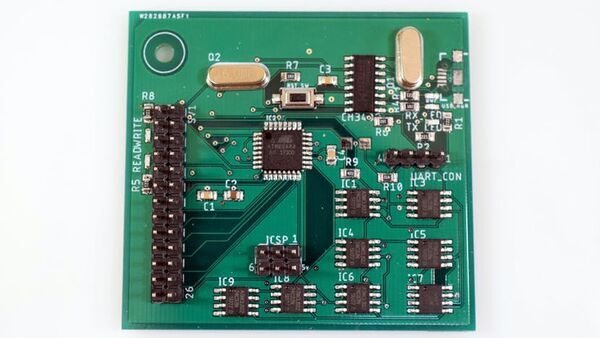
Building an Arduino-Based SSD
"An ATmega8 acts as a controller for 8 EEPROM chips, letting other devices store data on it, such as config files and logs, via UART or USB. A Common Problem Normally, SD cards are used to store large amounts of data when logging information or retrieving files. However, SD cards have slow access times and require 4 GPIO pins, along with more software overhead. When using microcontrollers that are short on RAM and/or GPIO pins, such as the ATtiny family, storing large amounts of data while keeping a program small can be a large issue. To solve this, I wanted to construct an SSD that could mimic the functionality of a conventional one. Commonly found SSDs are comprised of a controller, flash chips, and sometimes a bit of DRAM that acts as a cache." [...]

DIY - Planter Box
"Christmas is just around the corner and my front-yard was looking like a small JUNGLE. So, before crack opening a cold one with the boys I planned to fix my front-yard" [...]
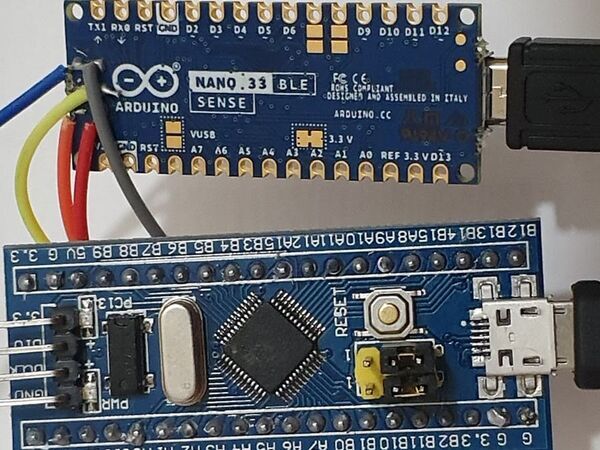
Arduino Nano 33 BLE/IoT Custom Debugging
"Learn how get going with debugging on your Arduino Nano BLE, as well as build your own low cost debugger module in the process! Story When you've finally found you need a debugger, and you're not sure which one to get, there is always the option of making your own from an existing board to at least try it out... Here we debug our Arduino Nano 33 BLE with an STM32 Blue Pill board converted into our Black Magic Probe. We can then add some custom entries in Visual Micro to configure this debugger before appears as standard (coming soon). Don't worry about your Blue Pill board to being a debugger forever, see the Undo section at the bottom to return it back to normal. NOTE - This will get debugging working, but we would recommend buying a purpose built Black Magic Probe for critical applications, which are competitively priced." [...]
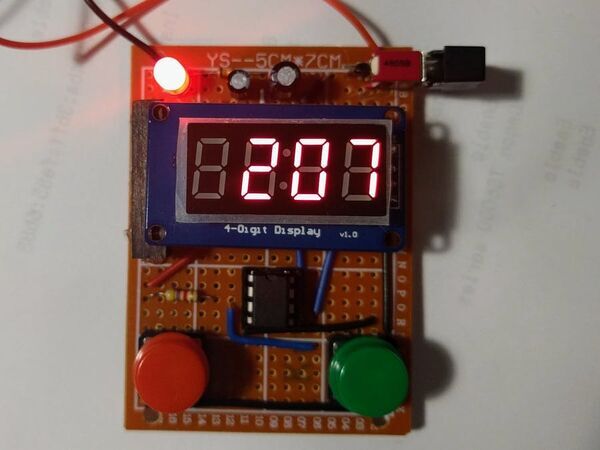
Stopwatch with ATtiny13 and TM1637 LED Module
"A simple stopwatch. If you have 5v power source you do not need to build the LM7805 Voltage regulator circuit as in the drawing. " [...]
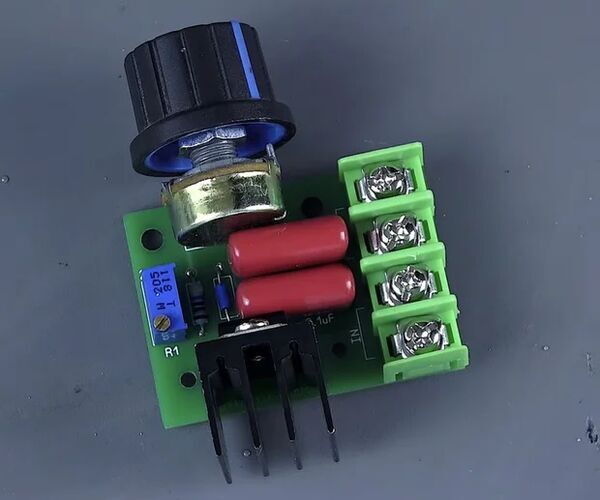
How to Make a Voltage Regulator 2000 Watts
"Dimmers - electronic load power regulators are widely used in industry and everyday life to smoothly control the rotation speed of electric motors, fan speed, heating elements of heating elements, the intensity of lighting of rooms with electric lamps, setting the required welding current, adjusting the charging current of batteries, etc. It can be used to change within a small range of revolutions of a drill, grinder, drilling machine. Dimmers are built into the control unit and power supply of various household appliances and tools. " [...]
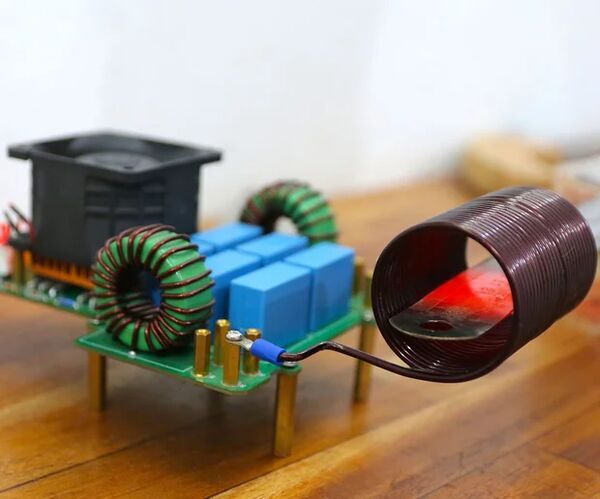
2000 Watts Induction Heater
"Induction heaters are a great piece of tool for heating metal objects that can come in handy in a DIYers workspace when you need to get things red hot without messing up the whole space. So today we are going to create an extremly powerful induction heater totally from scratch and the good thing is that this unit is built using customized Printed Circuit Boards which makes the whole building process for you guys a piece of cake and neat aswell. List of material required for this project : - Customised printed circuit board - 12 AWG & 16 AWG enamel copper wire - Ferrite cores - 12v DC fan - Heat sink - Resistors - Capacitors - Diodes List of tools used in this projects : - Soldering Iron - Soldering wire - Cutters - Pliers" [...]
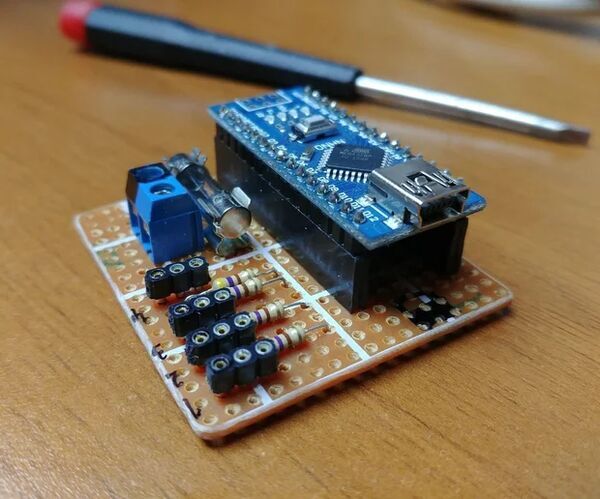
3 Channel Digital LED Strip WS2812 Controller
"I have always wanted an inexpensive way to control multiple digital led strips. This instructable shows all the steps I went through in designing and building this project. It works based on microcontroller Arduino Nano ATmega328 and program Arduino, which is in C++. In program, we define each led strip, how many numbers of led diode does it have and color for each led diode individual. Materials: - 1 x Arduino Nano Atmega328 - 4 x 470Ω resistor - 1 x 10kΩ resistor - 1x fuse 2A (based on your needs) - 3 x LED strip type WS2812 - 1x PCB plate - 5 x Input / output terminals Total amount = 16 parts Tools: - Solder gun and solder - Wire cutters - Needle nose pliers - Drill and drill points - Hand or powered saw - Rotary Tool - Sandpaper - Digital multimeter - thinner - rosin powder - brush - stronger plastic pot - Safety Glasses :)" [...]
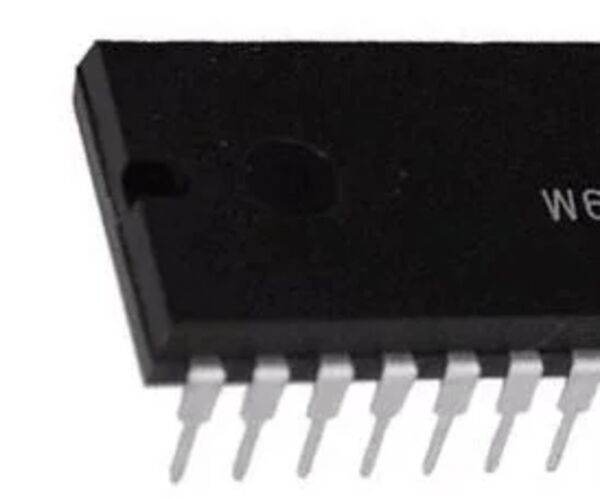
6502 Minimal Computer (with Arduino MEGA)
"The 6502 microprocessor first appeared in 1975 and was designed by a small team led by Chuck Peddle for MOS Technology. Back then it was used in video consoles and home computers including the Atari, Apple II, Nintendo Entertainment System, BBC Micro, Commodore VIC20 and 64. At that time it was one of the cheapest on the market. It has never really gone away and now it is used by hobbyists and professionals for many applications. The version I am using is the W65C02S6TPG-14 which is made by Western Design Centre and uses ten times less power than the original. It is special in that it does not have to run at 1 MHz like the original chip." [...]

Breathalzer Medallion
"We all have a special friend who needs supervision on a night out. Mine is called Geoffrey, and on his stag weekend it seemed prudent to have an outward display of how much of a liability he was likely to be. This instructable outlines the construction of a medallion which contains a breathalyzer with a progress bar around the edge and an e-ink display in the middle. It is based on arduino code and uses an ESP32 board which is compatible with the arduino IDE. Supplies: You will need Access to a 3D printer Access to a laser cutter Metalized laser cut material Small lipo battery Alcohol sensor - MQ3 or MQ4 breakout board [About £1 on eBay] E-ink display [waveshare 2.13" SPI module ~ £15 from banggood] ESP32 dev board with lipo charger [I used a lolin32 but adafruit now make the huzzah range which is very nice] Neopixel compatible ring [32 pixels is the right size if you want to use the attached CAD] Slide power switch [I used RS 829-0611] Decorations" [...]
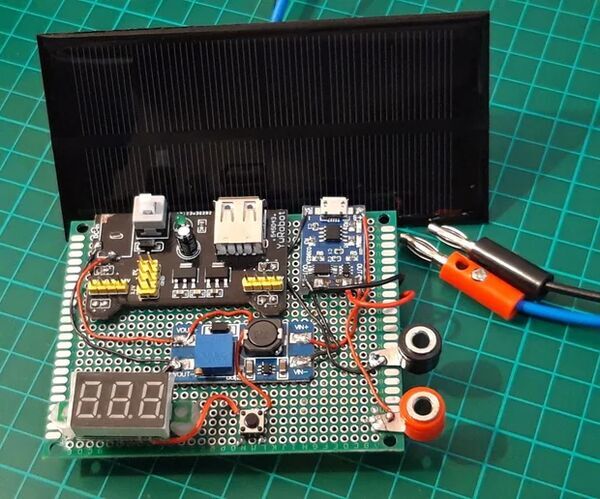
Portable 3,3V/5V Power Supply
"In this project I present you the power supply module I use mainly for my ARDUINO projects. Basically the circuit use a 3,7V 1800 mAh Lithium battery connected to a breadboard power supply module This configuration give us a 3,3V / 5V 750 mAh power supply you can use for your ARDUINO projects to connect other USB devices or to charge little toys. The Lithium battery can be charged from a external power supply using a micro USB connector or from a 6 V solar panel. A mini voltage meter show us the load voltage when we press its control button. I hope you like. Supplies: One double sided PCB prototype board (7 cm x 9 cm) One breadboard power supply module 3.3V/5V One micro USB Lithium battery charger One DC-DC boost converter One 6V 2W solar panel One mini voltmeter Two banana plug connectors and two banana plug sockets" [...]
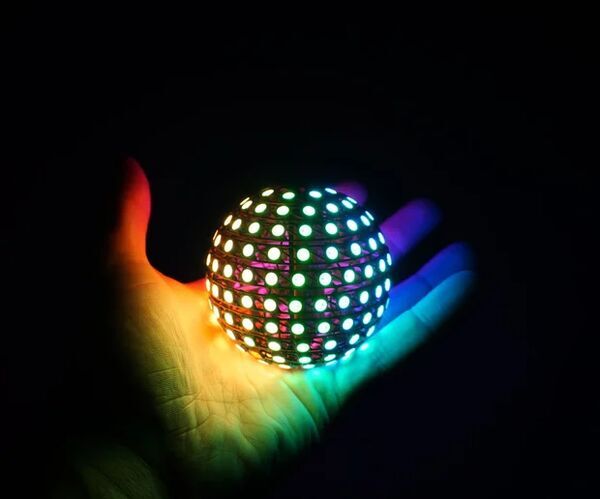
Freeform LED Sphere
"My Christmas project is done! Everybody is crazy about LED cubes. I wanted to create one myself, but I wanted to make it an even bigger challenge and since I am not limited by the use of circuit boards, I've decided to make an LED ball. It took me 24 hours to solder and one long night to finish. But it was worth it. It's nice when lit and even nicer when not." [...]

Internet of Things, Fun With Node-Red, Smartphone Control, Raspberry Pi
"This Instructable is targeted at beginners who want to get a glimpse of the wonderful world of Node-Red and the vast opportunities it opens for home automation, connected devices, home information, music systems the list goes on. All the software/firmware is free and runs on the very low cost Raspberry Pis. These are run in headless mode and so do not need any peripherals (screen, keyboard, mouse are not required). It has been written for a classroom environment where a local Wi-Fi network probably needs to be set up. This step is not required if a home Wi-Fi is available. After initial setup we add a remotely controlled switch– controlled by smartphone(s)." [...]
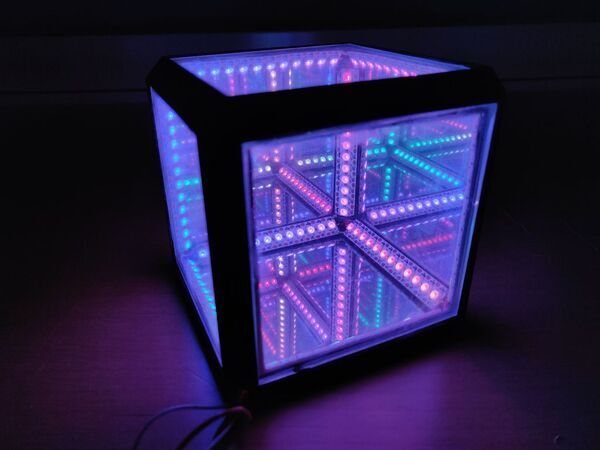
"Easy" Infinity Cube
"Infinity cubes and icosahedrons are things that have always caught my eye. They however always seemed quite hard to make, because of the relative complex frame. This infinity cube, however, has a frame that is printed in one piece. Making the build a lot stronger and easier than most other projects. The size of the cube is chosen so only 1M of LED strip is needed for the entire cube, keeping the cost low. I am very happy with how this project turned out and hope you like it as well!" [...]
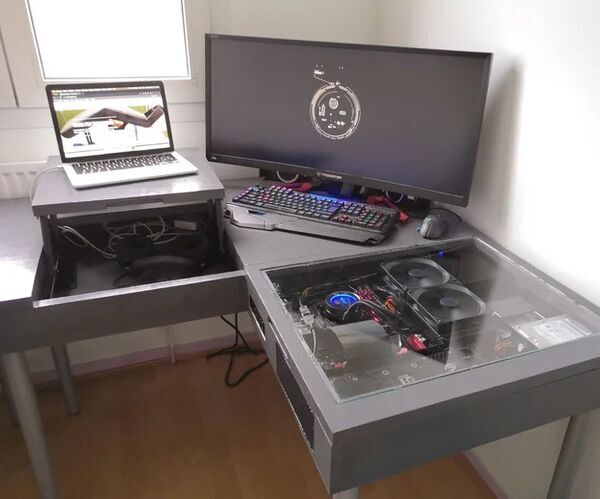
Desk With Built-in Computer and Laptop Height Stand
"The most elegant way to own a computer isn't necessary inside a case at the bottom of your desk. You can also build your own desktop-showcase to save space and let the world know about your passion (#pcmasterrace) ! To start this project, I first estimated global dimensions, and imagine how it will fit in my room. I wanted to build it in two parts in the case where, in my next appartement, both parts couldn't fit in the same room next to each other. I will kept in the main part my computer components and a built-in laptop height stand. In the other part, I will build a large drawer to store things like games controllers, cables, computer spare parts,... For the computer itself, I own a desktop computer composed of : a motherboard (atx format) a CPU some RAM a (way to massive) ventirad GTX 970 graphic card an SSD 3 HDD some fans a power supply unit In order to fit all of that in the thickness of a desk, I had to replace some parts." [...]
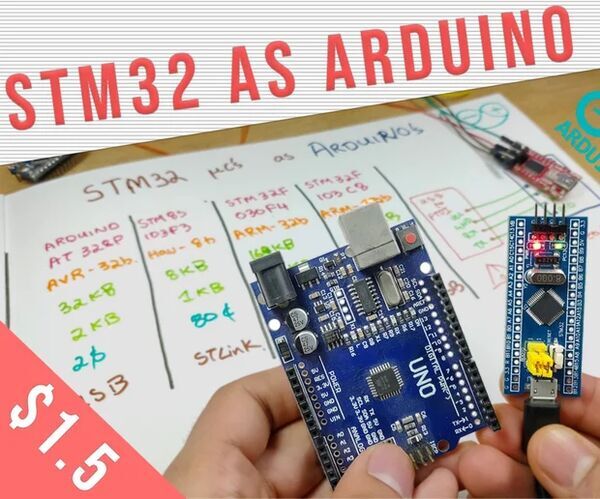
Using a STM32 Like an Arduino Tutorial | STM32F103C8
"In the following tutorial, we will be looking at the different microcontrollers offered by STM like the STM32F103C8, STM32F030F4 and STM8S103F3. We will be comparing these micros to each other along with comparing them to the Arduino. Once that is out of the way we will be converting the STM32F103C8 to an Arduino so that you can upload any Arduino IDE code to the STM32 using just a USB cable like you would with an Arduino. Let us start with the fun now. " [...]
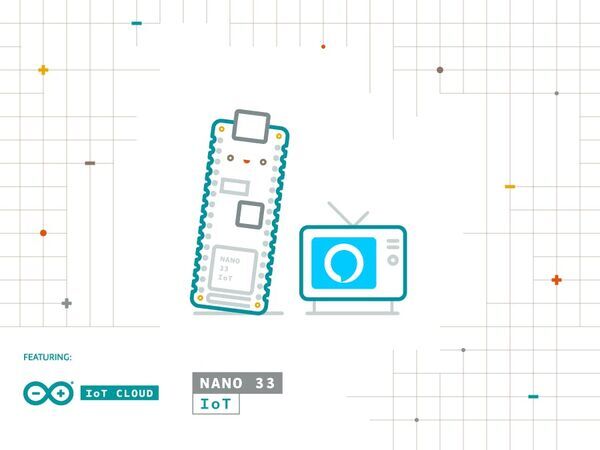
Full Control of Your TV Using Alexa and Arduino IoT Cloud
"Intro: Arduino IoT Cloud Arduino IoT Cloud is a platform that enables anyone to build IoT connected object with ease. In order to control our TV using Alexa, we'll also be using the Official Arduino Alexa Skill. If you are new to Arduino IoT Cloud, we advise to first take a look at this introductory project, which will give you an overview and guide you through the process of setting up one of the supported boards, IoT Cloud Things and Properties and get you onboard. Part 1: How to Control a TV Set The easiest way to control any kind of television, is to act as if we were its very own remote infrared controller. In order to do so, we'll have to listen for the signals the remote will send, capture the data and mimick it with our Arduino board. Once the circuit is assembled, we'll upload this sketch to our board." [...]
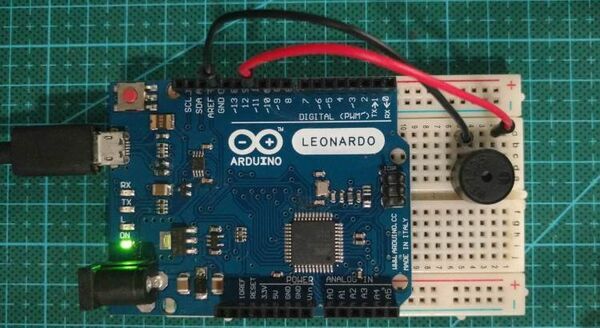
Songs for Arduino
"I have recently become very interested in music. Consequently, I started to learn how to read scores. So, I thought that adapting some songs for Arduino would be a good exercise. I wrote a few Arduino sketches, with some details on mind: Sketches should be compatible with all or almost all Arduino boards; No need for installing libraries; Sketches should be easy to understand and modify. That said, I have only used the tone() function, which is part of the Arduino “language”. The tone() function is capable of generating a single tone, in only one pin at a time." [...]
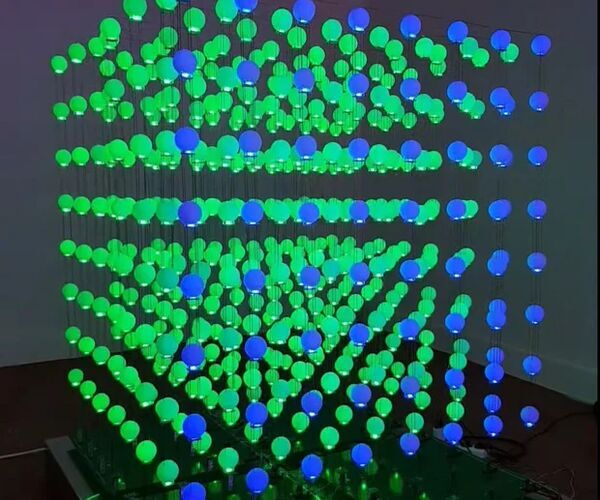
Patterncube
""Have you ever had a three-dimensional experience with us who have never encountered a three-dimensional light?" I started with the idea. You can create new light by spreading light from the ball, and the colors design the cube's pattern and experience various animation effects. Materials: 1. WS2812B-led-strip (512 LEDS) 2. Pingpong ball 3." [...]

Battery Operated IOT
"Many IOT projects operate intermittently. If they have to run by battery this is an enormous power drain. For example, a project that operates 30 seconds every 10 minutes wastes 95% of the battery capacity! This circuit manages battery power so only 250 nA are used in the idle time (that's 0.00000025 amps!) Most micro controllers have a low power standby mode but they still need power to keep the processor alive, also any peripherals will consume power. It takes a lot of effort to get standby current below 20-30mA." [...]
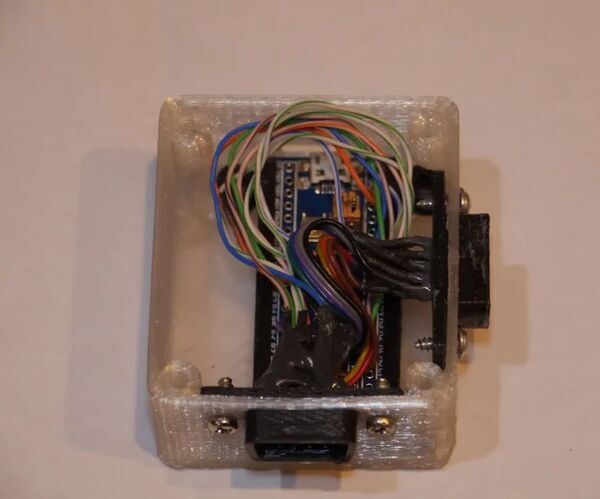
Sega Genesis Controller to USB Adapter for $2
"This adapter allows a Sega Genesis / Mega Drive controller emulate dual XBox 360 gamepads for use with retroarch or other software. It uses a Arduino-compatible stm32f103c8t6 blue pill for the electronics. Ingredients: - stm32f103c8t6 blue pill - two DB9 male sockets (I made my own) - wires" [...]
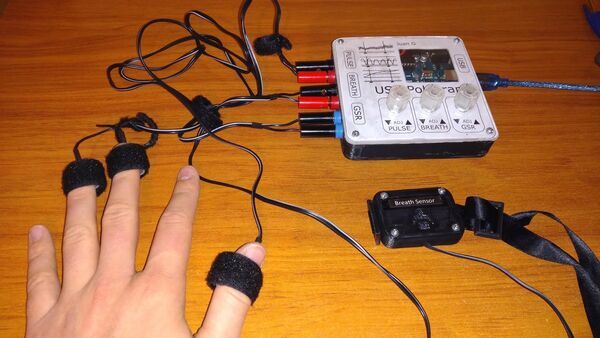
USB Polygraph
"This is a USB Polygraph, which I designed and built as a classroom project on June 2018. The hardware side is pretty simple, an Arduino UNO collects data from some sensors and sends it via serial. On the computer, a Python program takes that data and not only graphs it, but it also allows the user to save it, manages questions and adds question and answer markers to the graphs so results can later be inspected. All results are saved in .txt files. Three different sensors are used: -A "galvanic skin response" (GSR) sensor, which is just a voltage divider in which your hand is one of the resistors. When you get nervous, your skin resistance changes and that can be measured as proposed." [...]
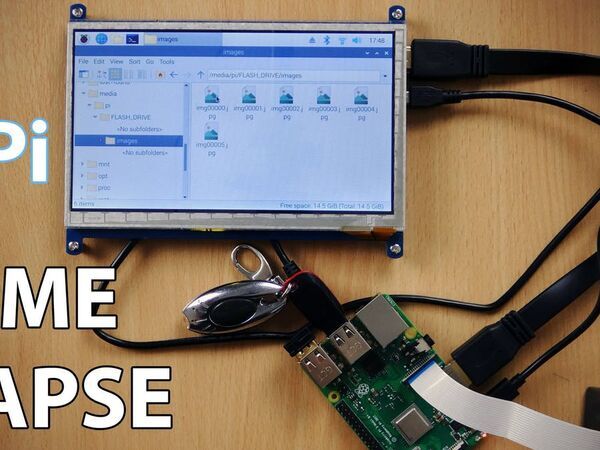
Simple Time Lapse Camera Using the Raspberry Pi
"This post will show you how you can build a simple time-lapse camera using a Raspberry Pi. This post will show you how you can build a simple time-lapse camera using a Raspberry Pi. The resolution, duration and time can be easily updated in the script. We have created something similar using the ESP32-CAM board but the Raspberry Pi camera quality is much better than that and hence the results are also better than the previous version. " [...]
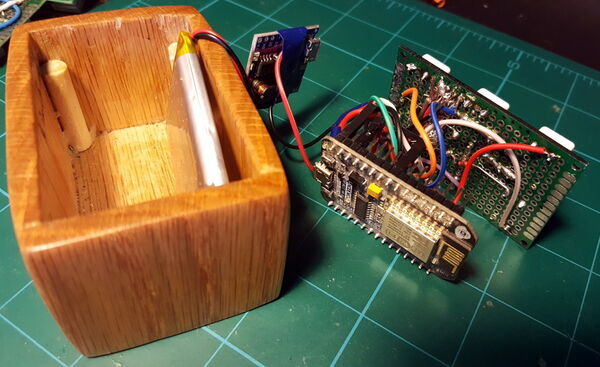
Wi-Fi Remote using an esp8266
"So I wanted to create a device that I could use to control all of my Home Automated devices through MQTT. This is what I came up with. It has 6 buttons: 5 usable buttons and 1 button tied to reset (to act as an on button). The 5 buttons can be pressed and held to trigger a new state, totaling 25+ functions from 5 buttons. A few years ago I had a similar motivation and worked on my first ever designed/printed circuit board. Being a ridiculous (but fun) project, It turned out pretty well, but certainly was not “smart”." [...]

HDD Platters Lamp
"Finally found a use for those old hard drives. Containing 60 RGB LEDs, this unique lamp makes a nice addition to any room. This unique lamp uses 11 hard disk platters and 60 RGB LEDs and would adorn any room in your home. It is controlled by a Web browser over a WiFi connection. It has eight animations that show off the beauty of this lamp. Original Version I would like to take credit for the design but this goes to Cosmic Mac (https://www.thingiverse.com/thing:3967804)." [...]
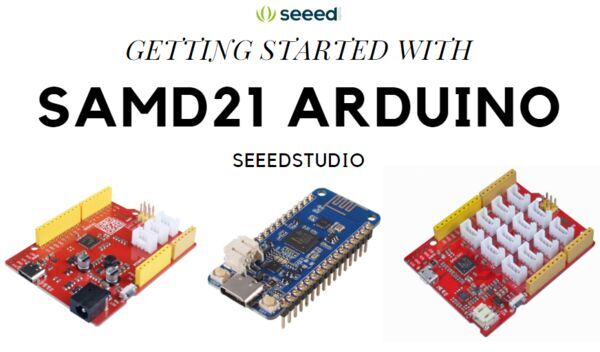
Getting started with SAMD21 Arduino
"Looking for a powerful microcontroller as an alternative to the Arduino? Why not consider the ATSAMD21 which can be programmed by the Arduino IDE? The Atmel’s ATSAMD21 is a low-power, high-performance Microchip’s ARM® Cortex®-M0+ based flash microcontroller. Here are its features: 256KB of flash and 32KB of SRAM 48MHz Operating Frequency Full Speed USB device and embedded host Support for up to 120 touch channels 1.62V to 3.63V power supply Six serial communication modules (SERCOM) configurable as UART/USART, SPI or I2C, three 16-bit timer/counters, 32-bit Real-Time Clock and calendar, 20 PWM channels, one 14-channel 12-bit ADC, one 10-bit DAC As you can see this is a very powerful microcontroller compared to the older 8-bit/16MHz Arduino microcontrollers. " [...]
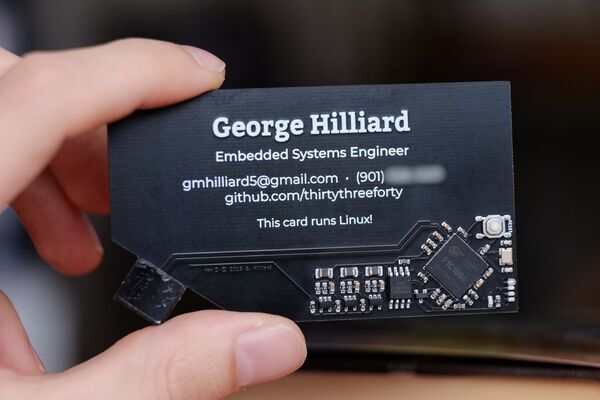
My Business Card Runs Linux
"I'm an embedded systems engineer. I spend a lot of my free time looking for things I could use in future designs, or things that tickle one of my fancies. One of those things is cheap Linux-capable computers, the cheaper the better. So I started diving into the very deep rabbit hole of obscure processors. I thought to myself, “These processors are nearly cheap enough to give away.” After a while I hit upon the idea of making a barebones Linux board in a business card form factor. As soon as I had the idea I thought it would be pretty cool to do." [...]

Recycle Cardboard Into Anything With 3D Printing!
"Paper is a ubiquitous and powerful material that we use every day. From newspaper to cardboard boxes to egg cartons, our world runs on paper, and a lot of it! However, all paper products tend to share a common characteristic: they're flat. Paper is so often 2D, flexible, and flimsy because of how it's manufactured. Paper is usually formed by suction, gravity, or rolling, but what if we used a different approach? What if we could mold paper, and compact it so that it has volume?" [...]
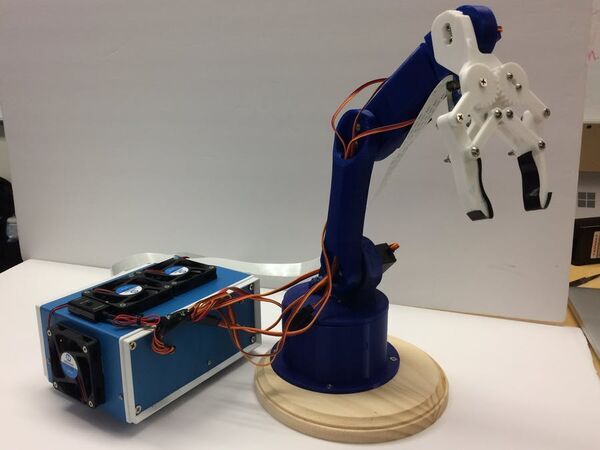
Recycle Sorting Robot with Google Coral
"A robotic arm that uses Google's Coral Edge TPU USB Accelerator to run object detection and recognition of different recycling materials. Story Did you know that the average contamination rate in communities and businesses range up to 25%? That means one out of every four pieces of recycling you throw away doesn’t get recycled. This is caused due to human error in recycling centers. Traditionally, workers will sort through trash into different bins depending on the material. Humans are bound to make errors and end up not sorting the trash properly, leading to contamination." [...]

Binary Computer / Calculator / Game
"Hello! This device have four function, first is number system converter, it converts binary numbers to decimal and hexadecimal. Second is binary calculator, third is for writing text, and last one is of course gaming. I can change mode with this potentiometer and this buton. You can check all functons in video below! I created this device to help my student to learn binary to decimal conversion and vice versa, also to practice ASCII codes with them." [...]

USB-LED-Otter
"Tiny USB to adressable LED adapter. Fits in your USB port :3" [...]
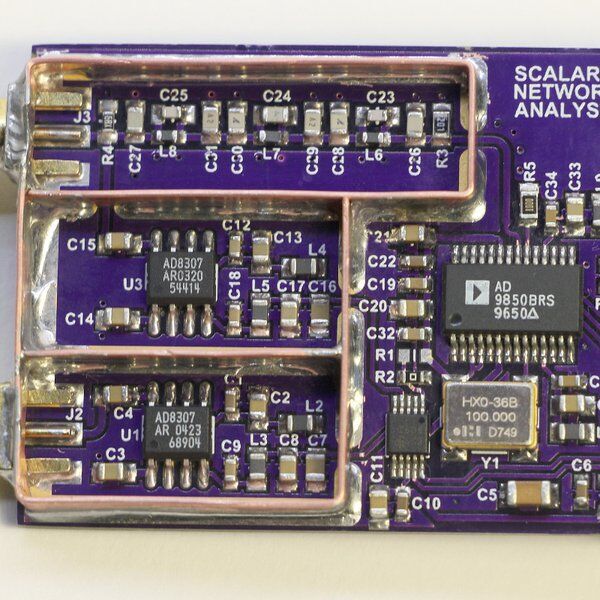
Scalar Network Analyser
"Scalar Network Analyser using DDS, log amplifiers and ADC. This project is a simple scalar network analyser using a DDS, log amplifiers, multi channel ADC and a generic I/O interface. The pinout matches a Raspberry Pi, but any micro-controller may be used to program the DDS and read the ADC. The analog bandwidth has been deliberately set at 30MHz. Note how the measured response matches the theoretical simulation very closely. There is approximately 0.02dB variance between 1kHz and 30MHz." [...]
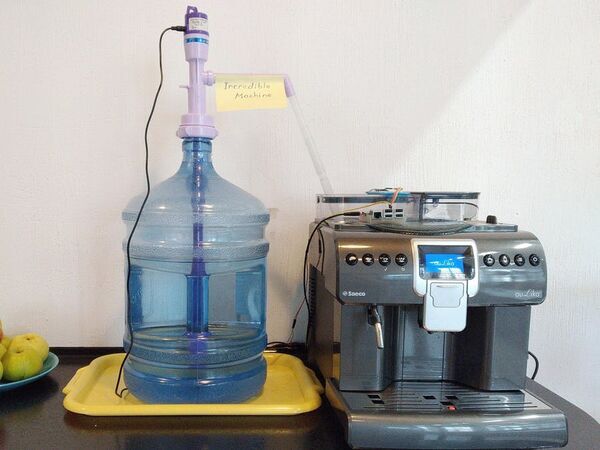
Smart Coffee Machine Pump with Raspberry Pi & HC-SR04
"Automatic water pump system for a coffee machine controlled by Raspberry Pi, HC-SR04 ultrasonic sensor and Cloud4RPi Control Panel. Story In theory, every time you go to the coffee machine for your morning cup, there’s only a one-in-twenty chance you’ll have to fill the water tank. In practice, however, it seems that the machine somehow finds a way to always put this chore on you. The more you want coffee, the more likely you are to get the dreaded “fill the water tank” message. My colleagues feel the same way about this. Being the nerds that we are, we decided to implement the technology that would put an end to this." [...]
Wooden NeoPixel Xmas Tree
"It's never a bad time to make a NeoPixel project, but the holiday season certainly does lend itself to creating large-scale, blinky, colorful displays. In this project, we're taking the classic Christmas tree shape, cutting it out of wood and mounting some NeoPixels in the tree to create a festive yuletide light display. The whole thing is controlled by a CircuitPlayground Bluefruit board, which sits proudly on top of the tree in a 3D printed star with all ten of its NeoPixels shining brightly and swirling along with the additional pixels on the tree. " [...]

Mini Flight Recorder
"For a while a wanted to make my own flight recorder similar to the commercial altimeters but with my own requirements for functionality. In addition it needed to be visually appealing and functional in the same time … After some thinking about the design and functionality the idea for the MINI FLIGHT RECORDER was developed in my mind and I set myself to work. The new MINI FLIGHT RECORDER (MFR from now on) has the following functionality: – Barometric/Altimeter sensor MPL3115A2 – Built in temperature sensor – 3D High g accelerometer ADXL375 – 128×32 OLED graphic display – 2MB built-in memory – 820 seconds recording time from all sensors – 40 SPS (25 msec between data points) – Built-in LIPO battery – Battery level indication – Built-in USB LIPO charger – USB port – Size 38x12x12mm (including battery) – Weight 5.6gr (including battery) – USB bootloader – Firmware update through the USB" [...]
Internet API for LED Pixel Strip based on ESP32
"It allows you to change theme of your LED pixel strip in an easy way over the internet in two modes: real-time display or saved animation. Send LED pixel strip state as a table (number of pixels * 3 RGB channels) over the internet available WebSocket. Thanks to that you can integrate LED pixel strips with other systems in very easy way. Sample application could be: make light FFT efect to a music played on your laptop smart TV backlight connecting ledstrip with a movement sensor in your lobby make a cool light decoration for your christmas tree that interacts with environment (eg. if someones enters room)" [...]
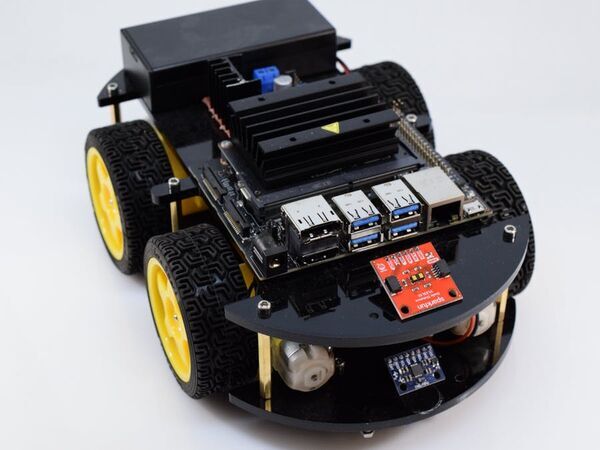
Building a Custom JetBot with Jetson Nano
"Take Nvidia's JetBot platform to the next level by expanding the functionality of the Jetbot API by adding new sensors and drivers. Nvidia’s JetBot Platform After training your Jetson Nano to recognize how many fingers you’re holding up or whether you’re giving a thumb’s up or thumb’s down gesture, you might be wondering about the next possible project. Nvidia has developed a robotics platform that utilizes the Jetson Nano called the JetBot. It lets users control two motors via I2C and a PCA9685, along with viewing output on an OLED or via the web, and finally, it has support for a camera in order to perform computer vision tasks. On its own, the JetBot is a nice development platform to have fun with and experiment, but it lacks support for many important sensors and has limited capabilities for motor control. Possible Customizations Since I was planning on creating several robotics projects that rely on sensors besides a sole camera, I needed a way to interface them with the JetBot API and GPIO." [...]

Glowing Air-Bubble Clock; Powered by ESP8266
""glowing air-bubble clock" displays the time and some graphics by illuminated air-bubbles in liquid. Unlike led matrix display, slooowly drifting, glowing air-bubbles give me something to relax. In early 90s, I imagined "bubble display. Unfortunately, the idea was not realized at that time due to my limited skill and time, and similar idea products made by others until now. Now, the right time has come to me to realize my glowing air-bubble clock. Starting with some basic and preliminary tests, glowing air-bubble clock has displayed the time on my desk, at last." [...]
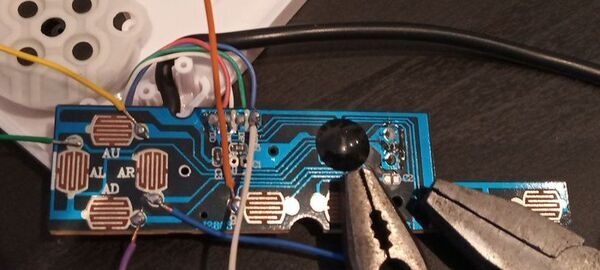
Gamepad decoder DTMF
"Thanks to the MT8870 chip, connecting the outputs of STQ, Q4, Q3, Q2 and Q1 to a transistor allowing to open or close the buttons of a GAMEPAD, DTMF tones can be decoded. We only ineed 5 pins (control buttons). It has been created as proof of concept a simple program in VB6 (to work in old equipment W95) to be able to read the buttons and translate it to DTMF tones. The program is not optimized, so send the tones slowly. You can use the web generator http://mamclain.com/?page=RND_SOFTWARE_DTMF_WEB_APP Can be tested with Windows' own joystick tester The concept is very simple, being the most difficult part in the manualities, to leave the control well prepared. The MT8870 can be powered with the 5 volts of usb, which we can take out following the cables of the control with a mulitester." [...]
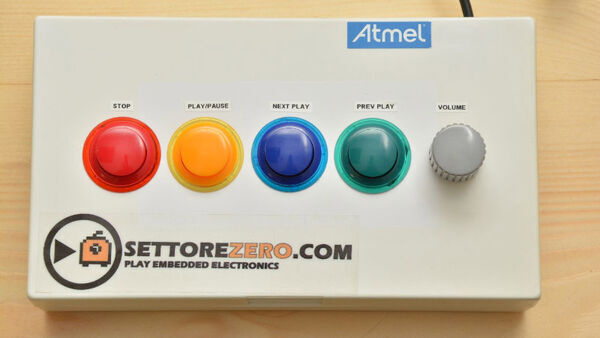
An USB keyboard for Media Players using Arduino Leonardo
"As always, friends ask me to support them for the technlogical part in their events, parties and so on. So this Christmas I’m involved in various Christmas pageants: I’ll be responsible to manage the audio part of the event (I don’t like to use the word ‘deejay’). I come from Commodore64 and Arcade coin-ops so I developed an idiosyncrasy for the mouse and I prefer a lot using keys and keyboard shortcuts when is possible… but my laptop is very old and it doesn’t have multimedia buttons. So I thinked to build me an USB multimedia-only-keys keyboard. I had a spare Olimexino 32U4 (an Arduino Leonardo clone) and some Arcade-Style microswitch pushbuttons: knowing the fact that the Leonardo has a lot of pre-cooked example about keyboard and mouse emulation I don’t think it twice about using those components. There was some initial difficulties: the Arduino examples don’t cover the multimedia buttons." [...]

The Google Trends Powered Christmas Tree
"Want to know how trendy Christmas is? Find out with this Google trends powered Christmas tree! Party mode included. Supplies: - Raspberry Pi 3b+ - 8x Adafruit NeoPixel - Button - USB Speaker - Wiring - Soldering Equipment - Pipe Cleaner - 3D Printer - Glue" [...]
That's all Folks!



